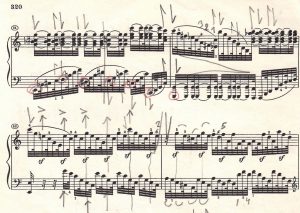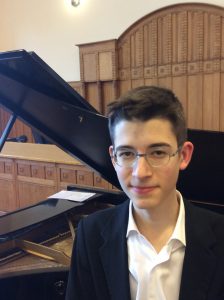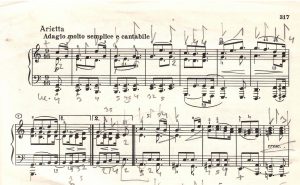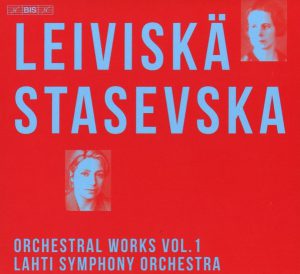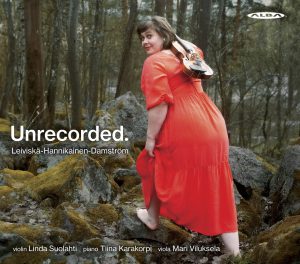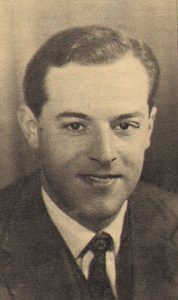Letters, Recordings and Performances
“… the most overwhelming pleasure
was provided by Finnish …
But … there been another call …
I heard it coming out of the west …”
O’Donnell Lecture by JRR Tolkien
Oxford University, 21 October 1955
On the inaugural O’Donnell Lectures at Oxford University Professor Tolkien recalled the country he got acquainted with after reading The Kalevala and the Finnish Grammar by Sir Charles Eliot. Tolkien began writing his The Story of Kullervo when he was a student at Oxford and most likely before the beginning of the “war to end all wars” – eventually he also began to write an essay on The Kalevala before going to France in 1916, less than a month prior to the deadly Battle of Somme. In his essay Tolkien was interested in comparative mythography, specially in the cases of Finnish and Welsh mythologies. On the present occasion I’d like to tell the reader about two stage works based in the writings of Tolkien, one from Wales and another from Finland.
I began my contact with the British composer Paul Corfield Godfrey (now living in South Wales) thanks to the kindness of Simon Crosby Buttle, the awarded British tenor working for the Welsh National Opera since 2009. According to the legend, Mr. Buttle approached Mr. Godfrey and they eventually considered the performance of sections from the latter’s scores after Tolkien’s books: The Professor was still working at the University when Godfrey first read his works. In 1971 orchestral excerpts Godfrey’s The Hobbit were performed in London – and that was before Orson Bean voiced the first Frodo and Bilbo Baggins that appeared in the movies (Bean would also become involved with Reichian psychoanalytic therapy).
Nonetheless, events prior to those in The Hobbit would definitely strike Godfrey. I am of course speaking of The Silmarillion, which is often considered one of Tolkien’s more difficult texts. To avoid confusion, I have prepared a table with a brief timeline of Tolkien’s works (The Silmarillion comprises events from Creation up to the Second Age). From top to bottom, the first row defines the different periods in Tolkien’s Legendarium and the second identifies Tolkien’s works related to each period. Finally, I offer a brief account of each period:
|
Creation
|
Ages of Lamps and Age of Trees
|
First Age
|
Second Age
|
Third Age
|
Fourth Age
|
|
Ainulindalë
|
Quenta Silmarillion
|
Akallabêth
|
The Hobbit
|
The Lord of the Rings
|
|
Creation of the World and the Gods
|
Creation and destruction of the Lamps. Creation of the Two Trees.
|
Destruction of the Trees. Silmarills are forged. Sauron arises after the defeat of Morgoth
|
The Rings of Power are forged. Sauron is “defeated.”
|
Bilbo Baggins acquires The One Ring.
|
The One Ring is destroyed.
|
Godfrey and Buttle saga continued, they were joined by the Volante Opera Productions -with its headquarters in Cardiff, it was founded in 1999 by Julian Boyce (Buttle’s colleague at the Welsh National Opera). Eventually, Prima Facie Records, which previously released songs and chamber music by Godfrey, also joined the efforts. And thus the Company was formed, little by little, as in the events described in The Council of Elrond.
On July 2023 The Complete Silmarillion was made available to the public. I’ve listened to it all and had substantial discussions with the composer. Allow me please to share a few notes. The whole cycle is being sold in a box with 5 double-CDs accompanied by a 128 pages guide to the listener and the complete libretto – it’s being sold for £65, but one may buy each of the 5 CDs separately for £15 at the official website. The first recording appeared originally in 2018, it was related to The Fall of Gondolin (so it was not the first chapter of the The Complete Silmarillion). In 2023, the fifth, The War of Wrath, was released along with the complete box set.
Godfrey’s The Complete Silmarillion is certainly a great collectible for a die-hard Tolkien fan. It’s a majestic work of musical art that covers the Ainulindalë (“The Music of the Ainur”), a section from the Age of Trees, the First Age (in more detail) and brief allusions to the Second Age. It should be remembered that Christopher Tolkien himself (the Professor’s son who edited The Silmarillion and published many of his father’s works) assisted Godfrey in the original stages of his creative process – sadly, Christopher passed away at the age of 75 in 2020.
Godfrey’s Silmarillion-cycle is undoubtedly the largest-ever recording after Tolkien’s works (“now total over ten hours” – the composer told me). And though nowhere close to Karlheinz Stockhausen’s Licht (with 29 hours) nor Richard Wagner’s Ring (with 15) it is surely the largest-ever musical composition created in Wales, a small country but rich in tradition – not only for its early depictions of the Arthuriana, but also as being the homeland of the House of Tudor – including Queen Elizabeth I.
The recordings might not please every listener. They are labeled as Demo Recordings, with no orchestra involved – this made me constantly think on Luigi Pirandello’s Sei personaggi in cerca d’autore but in an somehow inverted situation (and hopefully an orchestra will be found!). Buttle offered what I believe to be but a temporary solution: a sampled orchestra (opposed to synthesised). Even so, other artists from the chorus of the Welsh National Opera joined, including Angharad Morgan as Galadriel (she also offers lessons in singing) and Jasey Hall as Sauron (who is also a skilled tubist). Buttle, by the way, appears in many roles, including Elrond and Ëarendil.
The Ainulindalë (CD1: Fëanor) is of outstanding value – it’s Tolkien’s words turned into music in its most exemplary form. Anyone familiar with Tolkien’s writings will remember that the universe was created in The Music of the Ainur. So now we may hear it, as close as it is allowed by the Tolkien Estate. But do not mistake Godfrey’s Ainulindalë with Wagner’s overture for Das Rheingold – the former’s “water theme first appears definitively in the prelude to Scene Seven of Fëanor … But of course there are also the themes associated with [sea-god] Ulmo [performed by Martin Lloyd, who, among many others from the Welsh National Opera chorus, were residents in 2014 at Savonlinna performing Nabucco and Manon Lescaut]” – so said the composer (further confirmed by Buttle). CD1 continues with the story of Fëanor (Simon Buttle), who have been described as a reinvented Ilmarinen, for they were both skilled forgers.
With Fëanor’s death in CD1 we continue with CD2 where the listener joins the love-story between Beren and Lúthien (with Morgan and Boyce in the main roles). I particularly enjoyed the musical treatment on the song The Promise Fulfilled with its oscillations between somber and soft tonalities. You don’t have to understand or have previous knowledge of the text to feel the essence of the section. I speak of course of the doomed Oath of Fëanor (that led to many sorrows and death) and Finrod’s own oath to Beren which fostered the alliance between elves and men.
Still, I was even more thrilled by Lúthien’s dance. In the composer words: “initially as a light-hearted game in her enticement of Beren.” I understand it as a reminiscence of Herder’s translation of the Danish ballad that eventually became Goethe’s Erlkönig (then turned into music by Carl Löwe and Franz Schubert) – with a plot-twist nonetheless. After losing his hand and dying, Lúthien manages to bring Beren back to life after a plea to Mandos (with, in my opinion, not without influence of the Orphic myth). On a discussion over Lúthien’s dance, the composer told me:
I deliberately avoided any attempt to depict the Elves (or hobbits) as ‘fairy-like’ in the style of Mendelssohn, which I am sure Tolkien would have thoroughly disliked – although I find the incidental music to A Midsummer Night’s Dream enchanting, especially when performed in the context of the complete play with all the melodramas included.
Moving on to CD3 (The Children of Húrin), I was at first absorbed by its psychoanalytic implications (being a trained psychotherapist myself, how couldn’t I?). Renowned Finnish psychoanalyst Tor-Bjorn Hagglund once wrote “Kullervo is a prisoner of his own oedipal hatred of his father and his desire for revenge” (p. 172). In addition: “the Oedipus complex of childhood becomes predominantly that of Väinämoinen, of Ilmarinen, of Lemminkänen or of Kullervo” (p. 174). On top of that, the world as we know today could have been deprived of both The Lord of the Rings and The Silmarillion. Though Allen & Unwin had already published The Hobbit, Tolkien’s new writings were rejected by them. This rejection urged the Professor to write a very long letter to Milton Waldman in the early 1950s. On that occasion the former said: “There is the Children of Húrin, the tragic tale of Túrin Turambar … a figure that might be said (by people who like that sort of thing, though it is not very useful) to be derived from elements in Sigurd the Volsung, Oedipus, and the Finnish Kullervo” (Letter 131) – speaking of which, in November 2023, The Expanded Edition of J.R.R. Tolkien’s Letters was released, with sections from Letter 131 that were previously excluded from the standard volume of Tolkien’s letters. The new Expanded Edition includes 150 new letters and restored ones (such as Letter 131).
Erik Tawaststjerna studied the incest motive in Jean Sibelius’ Kullervo. It’s recognition appears (as the reader certainly knows) in Scene Two, with an oscillation between A flat major and A flat minor: “This is no Tristan-like meeting … it is an encounter between two primitives who experience all powerful sensations and feelings” (p. 116). “Voi, poloinen, päiviäni” (Sibelius, p. 289) sings Kullervo on his lament “accompanied by convulsive chords … and in it Kullervo longs for death” (Tawaststjerna, p. 117). Eventually, Godfrey told me about his speeches to the Dutch Tolkien Society Unquendor “I have there referred to the quotation in my setting of The Children of Húrin from the Sibelius Kullervo symphony – which in turn dovetails neatly into the whole world of the Kalevala and the influence of Finnish mythology on Tolkien’s legends.” At this point, I should ask the reader to forgive me, for the issue is already known, even outside Finland: Godfrey directly quoted Jean Sibelius in his depiction of Túrin Turambar’s recognition of the incest he has committed (though again with Buttle in the role, “the casting would not happen like this if these works were done live”, emphasized the tenor).
On CD4 (The Fall of Gondolin) we are led to the hidden realm of the elves that was so tied with Túrin’s tale. I felt that the song Man Kenuva in Elvish was particularly interesting – it echoes the motive related to the idea of sailing across the Ocean towards the Blessed Realm with echoes from Ulmo (A minor-seventh). Such song appears in the Epilogue titled The Last Ship, which
was selected largely because I wanted a substantial poem in Elvish to be sung by the voices across the water to act as a counterpoint to the setting of The happy mariners … unlike the earlier Elvish hymn to midsummer in Gondolin, there is no attempt to forge an individual ‘Elvish’ style as I attempted in the earlier setting with its overtones of Russian chant and Tudor polyphony and its close approach to the meaning of the text. The more distant and impersonal setting of The last ship will of course be almost incomprehensible to an audience in performance, even if they understood every word of the text – said the composer.
In a even more musicological tone Godfrey pointed out that its
sense of ‘other-wordliness’ is deliberately underlined by the manner in which it moves harmonically in keys that often move away from the principal tonality (as in the final double chorus) and reflects the way in which sounds moving towards or away from the observer are subject to relativistic changes in pitch … I have sought to underline elements in the narrative by appeals to the subconscious ear of the listener.
In CD5 (The War of Wrath), I was astonished by Galadriel’s dance in the Epilogue. It is certainly a traditional motive in the Arts. Though I’m particularly fond of Karl Wilhelm Diefenbach’s Der Feentanz from 1895, one should not disregard Geofrey Chaucer’s The Canterbury Tales (of course written in Medieval English): “The elf-queene, with hir joly compaignye; Daunced ful ofte in many a grene mede” (Wife of Bath, 860-1) nor Henry Purcell’s “Trip it, trip it in a Ring; Around this mortal dance, and Sing” (p. 6, 1693). According to Godfrey:
The music for the Elvish dance at Galadriel’s words in the Epilogue [of The War of Wrath, CD5] … goes back a very long way – in fact to the early 1970s when I wrote my opera on The Hobbit, where the rhythm formed the setting of ‘Dance all ye joyful, now dance all together!’ sung by the elves in Rivendell. I later purloined the theme for use in my description of the Outling dance in my setting of Poul Anderson’s The Queen of Air and Darkness (which can be heard also on YouTube), and it fitted ideally into the music at that point in the Epilogue, adding a lift and lightness to the harmonic texture which is then contrasted with the same rhythm slowed down and given a more mournful form by Círdan immediately afterwards.
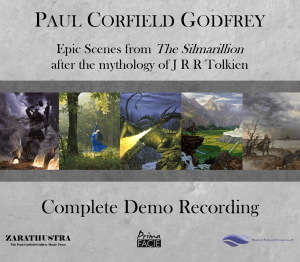
Artwork: Ted Nasmith
Cover Design: Volante Opera Productions
Copyright 2023 – used by permission
Furthermore, if The Silmarillion is already recorded, we are still waiting for its performance. Godfrey and Buttle are currently working on the stage design for it. As of today, we know only of stage performances and movies on The Lord of the Rings and The Hobbit – with the exception perhaps of the Children of Húrin, that was rehearsed in Priscilla Tolkien’s home in a preparation for the Oxonmoot in 1982. Moreover, in early 2023, The Watermill Theatre at Berkshire, England, revived the musical spectacle originally created by Shaun McKenna and Matthew Warchus. The Finnish folk music band Värttinä collaborated with Indian composer Allah Rakha Rahman for the original performance in Toronto back in 2006. A shorter performance was prepared for London West End in 2007, and a recording is available.
Furthermore, as many in Finland know already, Suomenlinna was the stage for the 1988 and 1989 performances of The Lord of The Rings, with Kari Väänänen, who also acted in many movies by Aki and Mika Kaurismäki, including La Vie de Bohème (1992) and A Spice for Life (2019). Väänänen acted as both Aragorn and Gollum (better known as Klonkku in Finland) in the 6 hours live production and in the 9 hours and 30 minutes TV show directed by Timo Torikka (who acted as Pippin in the Suomenlinna production). Later on, in 2002 and 2003 the city of Jyväskylä received a production of the Lord of the Rings once again with Toni Edelmann, who had already created the music for Suomenlinna and the TV show.
More recently, the Turku City Theatre offered a performance of The Lord of The Rings. The Helsingin Sanomat from February 16, 2018 gave an overall positive review, though with criticism on the high influence from Peter Jackson’s movies. Next year, the audiences will meet Sami Keski-Vähälä and Pirjo Liiri-Majava works – they worked respectively in the dramatization/adaptation and with costume design for the Turku 2018 performance, and now will join the crew that is preparing a performance in Tampere (Liiri-Majava was also costume designer for the performance of The Hobbit at Turku back in 2021).
At the Tampere Theatre, Ella Mettänen as Frodo will lead the way against the forces of Sauron. The actress already raised awareness to a serious clinical problem that affects social in life in Kipeä Esitys at the Takomo Theatre, Helsinki. If Mettänen spoke of chronic pain at the Takomo she will apparently be tackling – either directly or indirectly – feminist issues at Tampere. It’s certainly one thing to have one of the hobbits (namely Pippin) being performed by an actress (Amelia Gabriel), as it was the case in Watermill/Berkshire. But if all of the 9 members of the “Fellowship of the Ring” were males in the book, now 4 will be females in Tampere. Following Mettännen, Annuska Hannula will appear as Pippin, and Elisa Piispanen as Merry – Samwise Gamgee will still be acted by a male actor (Antti Tiensuu). The last member that is now a female is the dwarf Gimli (Elina Rintala). But it doesn’t stop there: Mouth of Sauron, Gorbag and Shagrat (all evil male characters) will be performed by the same artist that will act as Galadriel (Arttu Soilumo), Arwen (Henna Tanskanen) and Bilbo Baggins (Eeva Hakulinen), respectively. Not that I want to omit the other members of the crew, but it seems to me that Tampere is preparing a radical move that took place incipiently in Berkshire/Watermill – instead of 1 character with a switch of gender, now there are 7.
Gender studies in Tolkien’s works appeared as soon as other serious scholar approaches. The earliest study is possibly Doris Myers’ Brave New World: The Status of Women According to Tolkien, Lewis and Williams. Published in 1971, Myers’ study was heavily influenced by civil rights movements in the USA during the 1960s and 1970s. According to Janet Croft and Leslie Donovan: “readers and critics have discussed his Middle-earth narratives as lacking in women, preserving cultural stereotypes of female roles, and reflecting antifeminist tendencies” (p. 14). We should possibly also take The Kalevala into account. Scholar Kaarina Kailo stressed out that women are usually represented according to relational terms and are deprived of proper status. And when failing to abide to patriarchal norm, women are deemed as deviant, such is the case, for instance, of Louhi. For Kailo, Elias Lönnrot deliberately reshaped the tales he collected to fit his patriarchal agenda. Such criticism is something to have in mind after the Tampere production of The Lord of The Rings, specially considering the influence The Kalevala had on Tolkien.
In any case, such a feminist approach to Tolkien should be done carefully. As Croft and Donovan observed, there is a “continuing and alarming tendency among some current Tolkien scholars to remain unfamiliar with or to disregard outright the more positive readings of Tolkien’s female characters and gender politics” (p. 16). The authors remembered that even in 2014, after feminist attacks on Tolkien were already heavily worn-out, the author of a chapter for A Companion to J.R.R. Tolkien insisted on the passivity of Tolkien’s female characters.
Finally, it should probably be correct to affirm that Tolkien himself was the first to switch genders of traditional characters – in his own way. In The Silmarillion, Tolkien tells us:
The song of Lúthien before Mandos was the song most fair that ever in words was woven, and the song most sorrowful that ever the world shall hear … And as she knelt before him her tears fell upon his feet like rain upon the stones; and Mandos was moved to pity, who never before was so moved, nor has been since. (p. 186-187)
As the narrative continues until the end of Beren and Lúthien, we may continue to hear the echoes from the Orphic myth, which I chose here to quote after Claudio Monteverdi’s adaptation:
“Ahi sventurato amante,
…
Onde qual’ ombra errante
D’insepolto cadavero e infelice
…
Rendetemi’l mio ben, Tartarei Numi”
(1609, pp. 66-68).
– Daniel Röhe
Useful Links:
https://www.hs.fi/kulttuuri/art-2000005569379.html
https://tampereenteatteri.fi/naytelma/taru-sormusten-herrasta
http://www.kaarinakailo.info/
https://pirjoliirimajava.com/
https://teatteritakomo.fi/ohjelmisto/kipea-esitys/
https://www.paulcorfieldgodfrey.co.uk/
https://www.volanteopera.wales/
https://wno.org.uk/profile/simon-crosby-buttle
References:
Croft, Janet and Donovan, Leslie. Perilous and Fair: Women in the Works and Life of J. R. R. Tolkien. Mythopoeic Press, 2015.
Hägglund, Tor-Björn. “The Forging of the Sampo and its Capture.” The Scandinavian Psychoanalytic Review, 1985, 8:2, 159-180.
Monteverdi, Claudio. L’Orfeo. Favola in Mvsica. In Venetia Appresso Ricciardo Amadino, 1609.
Purcell, Henry. The Fairy-Queen. Tonson, 1693.
Sibelius, Jean. Kullervo. Breitkopf & Härtel, 1961.
Tawaststjerna, Erik. Sibelius. Volume I. 1865-1905. Translated by R. Layton. University of California Press, 1976.
Tolkien, J.R.R. The Letters of J.R.R. Tolkien: Revised and Expanded Edition. William Morrow, 2023.
____. The Silmarillion. Allen & Unwin, 1977.
